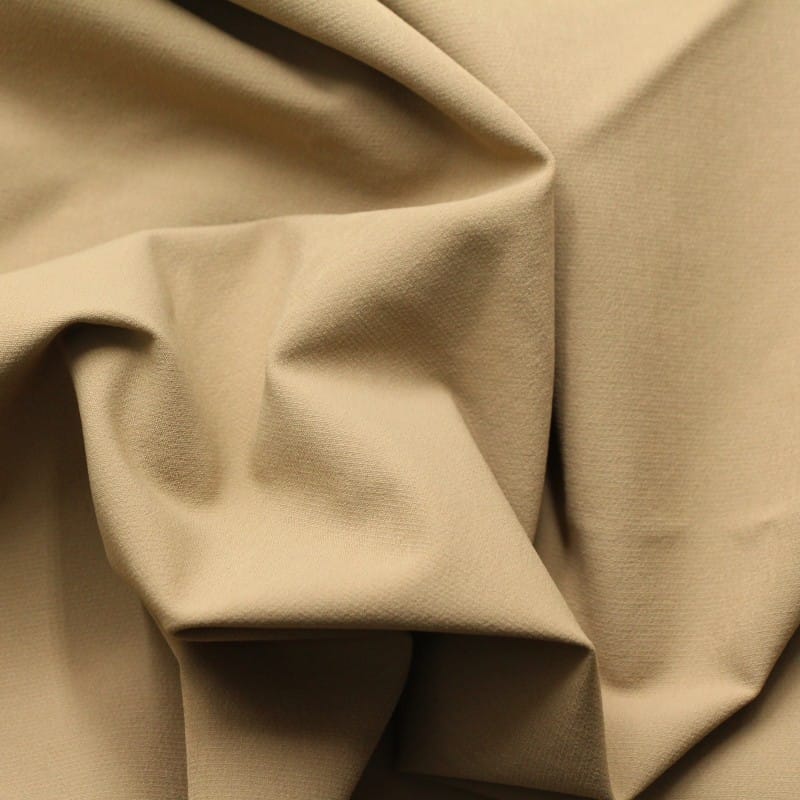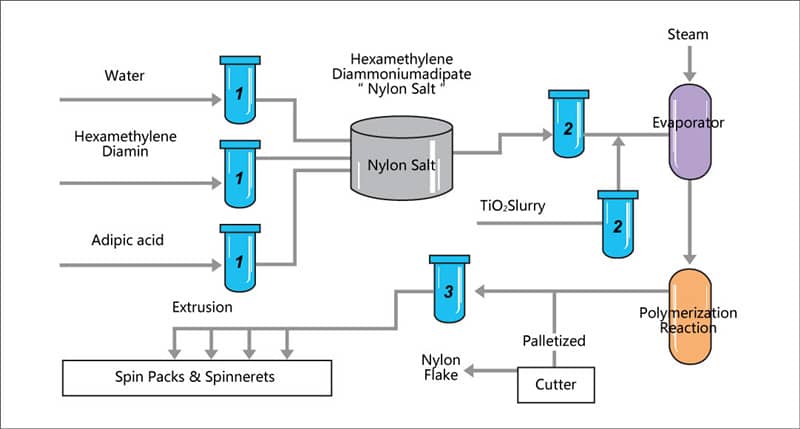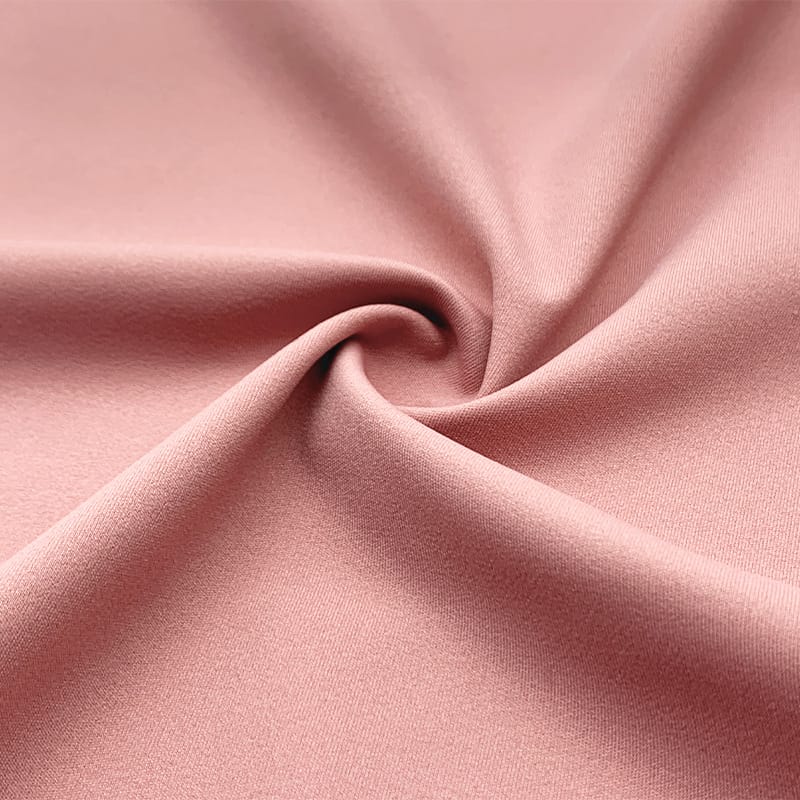
Nylon fabric, a hallmark of modern textiles, represents a revolution in the apparel and industrial sectors. Since its inception, nylon has woven its way into nearly every facet of our lives, from the clothes we wear to the gear we use in various professions. This synthetic polymer, known for its exceptional strength and versatility, has a fascinating history and an array of properties that make it a material of choice for countless applications.
History of Nylon
The story of nylon begins in the 1930s, a testament to human ingenuity and the quest for synthetic alternatives to natural materials. Nylon was the first synthetic fiber, invented by Wallace Carothers and his team at DuPont in 1935. This groundbreaking development marked a significant milestone in the history of materials science, offering a strong, elastic, and resistant fabric unlike any seen before.
Nylon’s debut to the public came in 1939 at the New York World’s Fair, and it was initially used in toothbrush bristles. However, its most notable early application was in women’s stockings, which became commercially available in 1940. Nylon stockings, or “nylons” as they were popularly called, were an instant hit, offering women a durable, affordable alternative to silk stockings. The demand was so high that “Nylon Riots” ensued at stores due to shortages.
During World War II, the use of nylon was redirected towards the war effort. Its durability and resistance to mildew and rot made it ideal for military applications, such as parachutes, tents, and ropes, underscoring its significance beyond the fashion industry. Post-war, nylon’s applications expanded into various sectors, including automotive, aerospace, and home furnishings.
Over the years, the evolution of nylon fabric has been marked by improvements in its production process and the development of various types of nylon, such as Nylon 6 and Nylon 6,6, each with unique properties. These advancements have solidified nylon’s status as a versatile and indispensable material in both industrial applications and everyday products.
How Nylon Fabric is Made

The production of nylon fabric involves a fascinating chemical process that transforms basic raw materials into long, strong fibers. At its core, nylon is a type of plastic derived from petroleum. The process begins with the extraction of the necessary chemicals, primarily adipic acid and hexamethylenediamine, which are combined in a reaction known as polycondensation. This reaction produces a polymer called polyamide, the chemical name for nylon.
There are different types of nylon, categorized mainly by their molecular structure. The most common types are Nylon 6, made from a single type of monomer called caprolactam, and Nylon 6,6, made from the two monomers (adipic acid and hexamethylenediamine) mentioned earlier. The numbers denote the number of carbon atoms in each monomer. These types differ slightly in properties, with Nylon 6,6 being slightly more durable and having a higher melting point, making it particularly useful in high-strength applications.
Once the nylon polymer is created, it is extruded through a spinneret, a device that resembles a showerhead, to form long, thin fibers. These fibers can then be cooled, stretched, and spun into yarn. The yarn is subsequently woven or knitted into nylon fabric, which can be further treated or dyed to meet specific requirements.
The environmental impact of nylon production is a point of concern, primarily due to its reliance on petroleum, a non-renewable resource, and the emissions associated with its manufacture. However, strides are being made in recycling technologies and the development of bio-based alternatives to reduce this impact and make nylon production more sustainable.
What Are The Different Types Of Nylon Materials?
There are many different types of nylon, each with its own unique properties. Here are some of the most common types:
- Nylon 6: This is the most common type of nylon. It is strong, abrasion-resistant, and has good elasticity. It is often used in carpets, clothing, and bristles for brushes.
- Nylon 6,6: This type of nylon is similar to nylon 6, but it is even stronger and more durable. It is often used in engineering applications, such as gears, bearings, and automotive parts.
- Nylon 11: This type of nylon is more heat-resistant than nylon 6 or nylon 6,6. It is often used in electrical applications, such as wire insulation and circuit boards.
- Nylon 12: This type of nylon is very flexible and has a low melting point. It is often used in hoses, tubing, and food packaging.
- Aromatic nylons: These nylons are made from aromatic diamines and diacid chlorides. They are very heat-resistant and flame-retardant. They are often used in aerospace applications and in electrical applications where high temperatures are involved.
Properties of Nylon Fabric

Nylon fabric is renowned for a set of properties that make it incredibly versatile and widely used across various industries.
Strength and Durability: Nylon fibers are robust, resistant to abrasion, and capable of withstanding significant stress before breaking.
Elasticity and Flexibility: Nylon is highly elastic and can stretch significantly without losing its shape. This elasticity lends itself well to apparel, especially in garments that require a degree of stretch for comfort and fit, such as hosiery, activewear, and lingerie.
Resistance to Wear, Moisture, and Chemicals: Nylon’s resistance to wear and moisture makes it an excellent choice for outdoor and performance wear. It dries quickly and can repel water, which helps prevent the growth of mold and mildew.
Thermal and Environmental Resistance: Nylon performs well under a wide range of temperatures, maintaining its properties in both hot and cold environments.
Applications of Nylon Fabric
Nylon’s versatility is showcased in its wide range of applications, from everyday items to specialized industrial components. Its unique properties have made it an indispensable material in various sectors.
Fashion Industry

- Clothing: Nylon is a staple in the production of activewear, swimwear, and outerwear due to its durability and moisture-wicking properties. Its elasticity also makes it ideal for lingerie and hosiery.
- Accessories: Durable and lightweight, nylon is commonly used in the manufacture of bags, backpacks, and wallets, providing long-lasting performance and resistance to wear.
Industrial and Automotive Applications
- Automotive Parts: In the automotive industry, nylon is used for components like seat belts, airbags, tires, and various under-the-hood parts due to its strength, heat resistance, and durability.
- Machinery and Equipment: Nylon’s resistance to chemicals and abrasion makes it suitable for cables, ropes, and other machinery parts, ensuring longevity and reliability in harsh conditions.
Home Furnishings and Outdoor Gear
- Furniture: Nylon is often used in upholstery fabric for its durability and ease of maintenance, making it an excellent choice for both residential and commercial settings.
- Outdoor Equipment: Tents, sleeping bags, and other outdoor gear benefit from nylon’s water-resistant and durable nature, making it a preferred material for items exposed to the elements.
Conclusion
Nylon fabric, with its rich history and broad spectrum of applications, remains a cornerstone of the textile industry. Its strength, durability, and versatility have made it an indispensable material in both everyday items and specialized applications. Get more garment knowledges in Valtin Apparel!
Frequently Asked Questions (FAQ)
- Is nylon fabric eco-friendly? Nylon is not inherently eco-friendly due to its petroleum-based origin and the environmental impact of its production. However, recycling efforts and the development of bio-based nylons are improving its sustainability.
- Can nylon fabric be recycled? Yes, nylon can be recycled, and efforts to increase the efficiency of nylon recycling processes are ongoing. Recycled nylon is used in various products, reducing waste and the demand for new raw materials.
- How does nylon fabric impact the environment? Nylon production is energy-intensive and uses non-renewable petroleum resources. It also contributes to greenhouse gas emissions. However, initiatives aimed at creating more sustainable forms of nylon and improving recycling processes are helping to reduce its environmental footprint.












